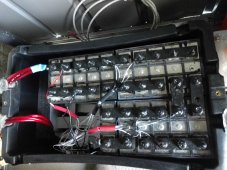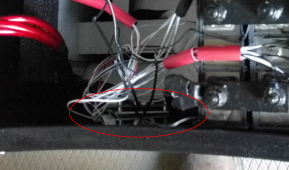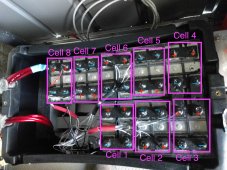I guess this assumes there is no draw even when off. Maybe someone with this unit can confirm?
Yep, its a cutoff switch. It has wires to each cell pair (more on this later).
If you have a volt meter, its super easy since you have access to all the cell posts.
From your pic, its apparent that you have 80Ah cells paired up (2P) to make a "120Ah cell equivalent". Each cell in the pair will have identical voltage because they are connected but one may be propping the other up. The voltage should be around 3.2V (its nominal voltage which is about 80% charged).
It takes 8 cells (or cell pairs in your case) in series (which sums the voltages) to make a "24V" battery (25.6V nominal (8 x 3.2V)).
If you can test the 8 cell pair voltages (pictured below), its possible to see if there is a bad cell pair (the most common trait of a failing battery). And yes, cell 1 is the negative end of the battery, so cell 8 the positive end.
View attachment 119532





